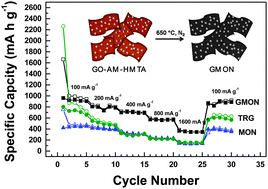Graphene–molybdenum oxynitride porous material with improved cyclic stability and rate capability for rechargeable lithium ion batteries†
Abstract
A

* Corresponding authors
a
National Center for Nanoscience and Technology, Beijing 100190, China
E-mail:
weizx@nanoctr.cn, hanbh@nanoctr.cn
Tel: +86 10 8254 5576
b College of Chemistry and Molecular Engineering, Peking University, Beijing 100871, China
A

 Please wait while we load your content...
Something went wrong. Try again?
Please wait while we load your content...
Something went wrong. Try again?
D. Zhou, H. Wu, Z. Wei and B. Han, Phys. Chem. Chem. Phys., 2013, 15, 16898 DOI: 10.1039/C3CP52315B
To request permission to reproduce material from this article, please go to the Copyright Clearance Center request page.
If you are an author contributing to an RSC publication, you do not need to request permission provided correct acknowledgement is given.
If you are the author of this article, you do not need to request permission to reproduce figures and diagrams provided correct acknowledgement is given. If you want to reproduce the whole article in a third-party publication (excluding your thesis/dissertation for which permission is not required) please go to the Copyright Clearance Center request page.
Read more about how to correctly acknowledge RSC content.
 Fetching data from CrossRef.
Fetching data from CrossRef.
This may take some time to load.
Loading related content
